Learn all about the Raspberry Pi: Getting started, Projects, Software, Tutorial
Have you ever heard of Raspberry Pi or seen a Raspberry Pi but have no idea what it means or does? No worries – as today we are going to answer all of your questions about the Raspberry Pi today!
The content of this blog will cover:
- What is a Raspberry Pi?
- What can you do with the Raspberry Pi?
- What makes the Raspberry Pi Special?
- Types of Raspberry Pi available now
- What’s on the board? (Hardware)
- Raspberry Pi Software
- Getting Started with Raspberry Pi
- Helpful Resources and Tutorials
What is Raspberry Pi?

To put it in simple terms, the Raspberry Pi is a computer itself!
Huh? But it’s so small, how can it be a computer?
Well, believe it! The Raspberry Pi is a low cost, credit-card sized computer that runs Linux. To use it, simply power it with USB power, plug in a mouse and keyboard, connect it to a TV or monitor! For software, you can load an operating system on an SD card just like the one in your phone and you are good to go! You now have yourself a working desktop at your disposal!
Not only that, the Raspberry Pi is able to control and interact with electronic components such as sensors and actuators and explore the Internet of Things (IoT). It’s a great platform for people of all ages to learn coding and programming, with support for beginner-friendly programming languages like Scratch and Python too!
Who created it?
The Raspberry Pi Foundation created the Raspberry Pi! The foundation was formed in 2008 with the goal to advance the education of adults and children particularly in the field of computers, computer science, and related subjects!
The first version of the Raspberry Pi launched in 2012 and there have been several iterations and variations released since then. Currently, their latest Single Board Computer is the Raspberry Pi 4 which features ground-breaking processing and performance speed!
On the other hand, we also have their first microcontroller release, the Raspberry Pi Pico, which runs on the Raspberry Pi Foundation’s very own RP2040 microcontroller chip.
This article will focus largely on the original SBC series, so be sure to click here if you’re keen to learn more about the Pico! Confused about the differences between microcontrollers and SBCs? This article should help you out!
How much does it cost?
The latest product in the Raspberry Pi SBC family, the Raspberry Pi 4 has 3 versions available which are 1GB, 2GB and 4GB RAM, costing:

As you can see, the starting price for the 1GB version is only $35 to only $55 for the 4GB version! If you want more RAM, we currently also offer their beefy 8GB version for $75!

Is there a cheaper option?
Well, there is! Introducing the Raspberry Pi Zero and Zero W. They are computers that are even smaller than your credit card which cost:

That’s right! They cost less than your average movie ticket at just $5 and $10 respectively. Interested? We will talk more about them together with the Raspberry Pi 4 in the types of Raspberry Pi section.
What can you do with the Raspberry Pi? (Projects)
At under $55, with the Raspberry Pi small size and capabilities, there is ALOT that you can do with the Raspberry Pi. From homemade robots to retro game consoles, the Raspberry Pi can be used to build many different projects! Here are some kickass projects that you can make with the Raspberry Pi!
Dual Screen Desktop Computer
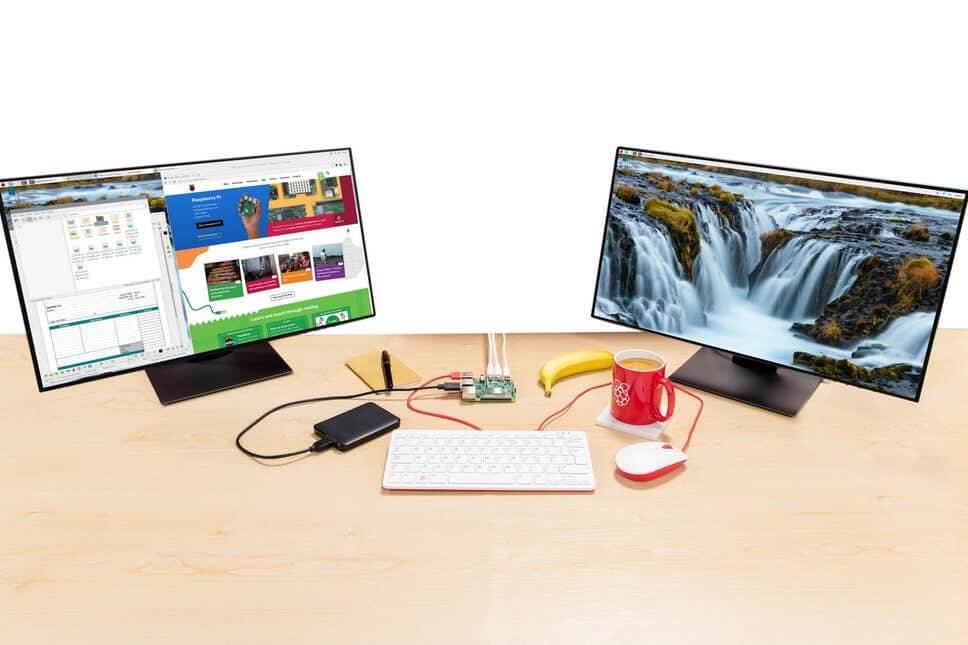
As the Raspberry Pi is a computer itself, why not build yourself a desktop! With the all-new Raspberry Pi 4, this computer can power two 4K screens at the same time, allow video and photo editing while having processing power to perform machine-learning!
Retro Game Console
As you can see from the above video which is an example of the Playstation System using your Raspberry Pi as a retro game console, you can now travel back in time and play your favourite retro games!
Pi Home Media Centre

Why spend money on a Roku Box or Apple TV when you can just use the Raspberry Pi to build a home media centre to stream your favourite content using free operating systems!
Smart AI Mirror
With the Raspberry Pi, there are several things you can build including a Smart Mirror! This smart mirror can display weather, news, time, control smart plugs, cast videos, play songs and many more!
Play Minecraft
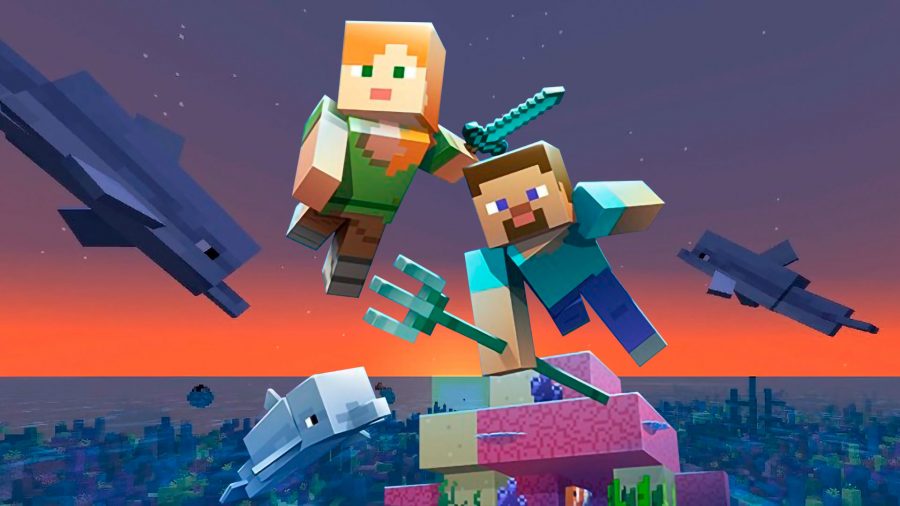
Do you know when you install Raspbian (Raspberry Pi Official OS), it comes along with a version of Minecraft Pi? But this is not an ordinary version of Minecraft as once you’ve got to grips with the in-game features, there’s an opportunity to break open the code and use programming language to manipulate things in the game world. Imagine learning programming skills from playing Minecraft! Wow!
NAS Server

Do you have a lot of files on your hard drive? Afraid that you may run into drive failure?
With NAS, you do not worry about those problems anymore! NAS which stands for network-attached storage, allows you to store things like your movies, videos, pictures, etc on portable hard drives and external storage devices via your network!
Those were just a few of our favourite projects you can do with the Raspberry Pi! But that’s not all as with the Raspberry Pi, you can create more cool projects from a home security system to filming a stop motion film with the Raspberry Pi! The possibilities are endless.
Interested in what other things you can do with a Raspberry Pi? You can check out our blog on the Top 40 Raspberry Pi 4 Projects That You Must Try Now for more!
What makes the Raspberry Pi Special?
So, why should you use the Raspberry Pi compared to other Single board computers (SBC) out in the market? Well, here are some more reasons why you should use the Raspberry Pi!
Low Cost
Needless to say, the first reason will be the cost of the Raspberry Pi! At such a low cost, you get yourself a versatile small computer board that is perfect for a variety of tasks! As mentioned above, the Pi 4 starts at only $35 and you can get a Raspberry Pi Zero for just $5.
Community
The Raspberry Pi community is one of the biggest reasons why you should get a Raspberry Pi compared to other single board computers out there! The Raspberry Pi features one of the biggest communities and support for debugging. Furthermore, it also has many detailed tutorials and projects with good documentation which is very suitable for beginners to learn.
Huge Variety of Accessories
In the previous years, many add ons and accessories have become developed just for the Raspberry Pi from cases, displays to HATs. Some of my personal favourites are:
- Raspberry Pi Camera Module V2
- SeeedStudio Piboxy Case for Raspberry PI
- Raspberry Pi PoE HAT
- Raspberry Pi Sense HAT – Make your own Astro-Pi
- Coral USB Accelerator
- WM1302 LoRaWAN Gateway Module Pi Hat
Size and Portability
At a size of 85.6mm x 56.5mm, the Raspberry Pi 4 is the same size as your credit card which makes it very portable. Furthermore, the Raspberry Pi Zero has found its way inside many different projects as it is only 65 mm x 30 mm which makes it even smaller than the size of a credit card.
Types of Raspberry Pi
Over the years, many Raspberry Pi models have been developed with of total of 4 generations currently which are Pi 1, Pi 2, Pi 3 and finally the Pi 4. On the other hand, the Pi Zero is a spinoff of the original Pi 1 version but it is much smaller, cheaper with a few additional features.
Right now, as the Pi 1, 2 and 3 have been discontinued, we will only go through the new and better Pi 4 which is currently now on sale together with the Pi Zero as a cheaper option.
There is also a Raspberry Pi compute module available now which we will explain more about below!
Let us look at the Raspberry Pi 4 first:
Raspberry Pi 4

The Raspberry Pi 4 Model B is the latest product in the Raspberry Pi range of computers. It offers ground-breaking increases in processor speed, multimedia performance, memory, and connectivity compared to the prior-generation Raspberry Pi 3 Model B+ while retaining backward compatibility and similar power consumption. For the end-user, Raspberry Pi 4 Model B provides desktop performance comparable to entry-level x86 PC systems.
It comes in 3 versions that varies on the size of RAM, so you can choose easily choose one according to your needs:
- Raspberry Pi 4 Computer Model B 1GB
- Raspberry Pi 4 Computer Model B 2GB
- Raspberry Pi 4 Computer Model B 4GB
- Raspberry Pi 4 Computer Model B 8GB
This product’s key features include a high-performance 64-bit quad-core processor, dual-display support at resolutions up to 4K via a pair of micro-HDMI ports, hardware video decode at up to 4Kp60, up to 4GB of RAM, dual-band 2.4/5.0 GHz wireless LAN, Bluetooth 5.0, Gigabit Ethernet and USB 3.0 port.
Raspberry Pi Zero and Zero W

The Raspberry Pi Zero and Zero W are computers that is smaller than your credit card which costs just $5 and $10 respectively which is only one-third of the price of the Raspberry Pi 4.
Despite its small size, it still offers decent computing abilities with a 1GHz, Single-core CPU and 512 MB RAM. For I/O, it also has a single mini HDMI port, 2 micro USBs, HAT-compatible 40-pin header, unpopulated 40-pin GPIO connector and a CSI camera connector!

As you can see above, with a GPIO, SPI, I2C, UART, etc available on the Pi 0, it is definitely a cost-effective small board computer (SBC) for beginners to start electronics. In addition, you can practice soldering and solder on a 40 pin header pins which makes attaching other electronics easier.
With its small size and low cost, it has found its way into everything and users have been experimenting it with different types of projects from a Pi Zeror retro gaming system, Pi Zero homemade inflight entertainment system to even a Pi Zero power electric skateboard!
What is the difference between the Pi Zero and Zero W?
For the Raspberry Pi Zero W it even includes 802.11 b/g/n wireless LAN, Bluetooth(R) 4.1 and Bluetooth Low Energy (BLE) for your Wi-Fi and Bluetooth connection needs.
If you require Wifi for your projects, we highly recommend getting the Zero W as if you wish to get Wifi and Bluetooth on the original Pi Zero, not only will it be inconvenient and troublesome, it will cost much more too.
Raspberry Pi Compute Module
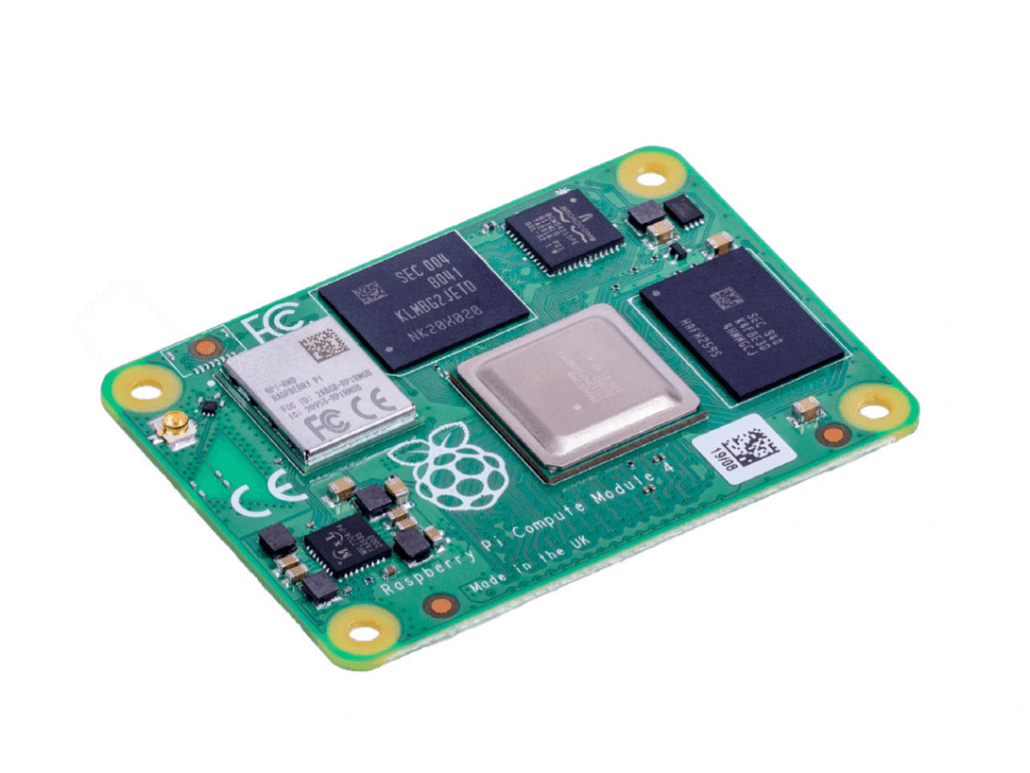
The Compute Module is designed for use in custom devices where capabilities of the Pi are desired but due to their size, don’t fit. What you are seeing now is a Raspberry Pi shrunken down to fit on a SODIMM (Same type of connector used for laptop memory) with onboard memory whose connectors can be customized to suit the user needs.
Utilizing the same computing power of the Raspberry Pi 4 Model B, Broadcom BCM2711 processor, Raspberry Pi Compute Module 4 is the latest version released by the Raspberry Pi Foundation. There is dual HDMI, PCIe, Onboard Gigabit Ethernet, and eMMC that comes with the Compute Module 4 has optional onboard eMMC of 8GB, 16GB, or 32GB, starting from $25. Compute Module 4 is smaller in shape and suitable for integration into products.
With the full flexibility of the Raspberry Pi CPU, this means more GPIOs and interfaces available compared to the Raspberry Pi board allowing users to design the module into a custom system easier.
With this in mind, the compute module is primarily designed for those who are going to create their own PCB. Alternatively, you can opt for one of many ready-to-use carrier boards, such as the Dual Gigabit Ethernet Carrier Board for the CM4, or even the reTerminal human machine interface!
If you want something simple which you can use straight out of the box, the Raspberry Pi 4 and Zero is recommended instead!
Interested in the compute module? Check out our guide to find out more about it!
Whats on the Raspberry Pi?
Wonder what is on the Raspberry Pi and the functions that it carries? Let us look at what is on the Raspberry Pi 4 board:

1)Micro SD Card Slot
This is where your Raspberry Pi stores information into a SD card from Operating systems, libraries and user programs.
2) 2 Lane MIPI DSI Display Port
This port is used for connecting an LCD panel using a 15-pin ribbon cable. This connector provides your LCD a fast high-resolution display interface for displaying video data directly from the Raspberry Pi GPU.
3) USB-C Power Port 5V / 3A
Your Raspberry Pi will require power to run. This port is used to power your Raspberry Pi using a USB-C plug similar to the one you use for your phone charger.
However, we recommend using the Official Raspberry Pi Power Supply as on certain occasions where your Raspberry Pi requires more power, using your mobile phone charger is not the most reliable. With poor power supply, your Raspberry Pi performance without a doubt will be affected.
4) 2 x Micro HDMI Ports
This port allows you to transmit high definition audio and video over micro HDMI from your Raspberry Pi to an external display.
5) 2 Lane MIPI CSI Camera Port
This is a camera port where you connect a camera module like the Raspberry Pi Camera Module V2 to add camera functions to your Raspberry Pi where you can create projects like making a CCTV for home security.
6) 4 Pole Stereo Audio
With this 4 pole type connector, you can plug in stereo headphones where it will work like a headphone jack or you can plug in an A/V cable where you will get stereo plus video.
7, 8) 2 x USB 2.0, 2 x USB 3.0
These USB ports are used to connect a mouse and keyboard to the Raspberry Pi to provide the Pi with additional functionality. You can also connect other components such as a USB drive or webcams.
9) Gigabit Ethernet Port
This is used to connect your Raspberry Pi to a network using an ethernet cable. The Raspberry can also connect to a network via WiFi.
10) PoE HAT header
This is used to connect to a PoE HAT which allows you to power your Raspberry Pi with a network connection over ethernet.
To learn more about PoE, you can check out our other blog on What is PoE and how to use PoE with the Raspberry Pi!
11) 40 Pin General Purpose Input/Output Header
These allow you to connect electric components such as LEDs, buttons and sensors to your Raspberry Pi.
12) 2.4 / 5GHz Wireless Bluetooth 5.0
This allows your Raspberry Pi to connect wireless to a network and Bluetooth.
Raspberry Pi Software
When it comes to software, there are a wide variety of operating systems available for your Raspberry Pi to suit your needs. They range from basic operating systems for new users to gaming operating systems, so which one should you use? Well if you are a new user, I recommend Raspberry Pi OS.
Raspberry Pi OS
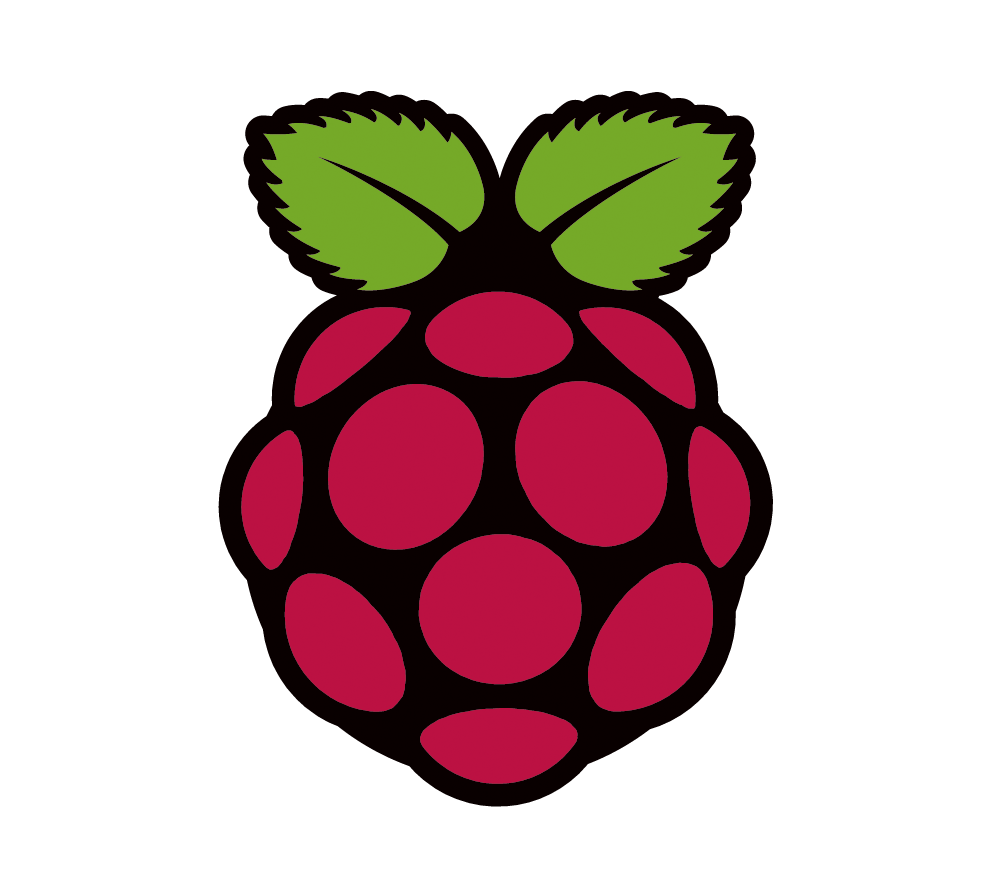
Raspberry Pi OS (previously known as Raspbian) is the official operating system for all models of the Raspberry Pi which is based on Linux-OS Debian. Using their easy installer, NOOBS you can easily install Raspberry Pi OS within minutes.
With the Raspberry Pi OS, they are mainly used for office suite, web browsing, programming using Python and DIY projects.
We recommend using this OS as it features regular updates, LibreOffice, an office suite for web browsing and emailing, etc and it is also easy to install if you are a beginner! In addition, being the official OS there are plenty of guides on Raspberry Pi OS and even if you encounter issues, you can easily find solutions online.
Along with the recent launch of the new 8GB RAM variant of the Raspberry Pi 4, Raspberry Pi 4 has a new 64-bit beta variant designed to take full advantage of the RAM upgrade.
Raspberry Pi HATs
Want to add functionality to your Raspberry Pi? Raspberry Pi Hats sit directly on top of the 40-pin GPIO headers on the Raspberry Pi to directly offer various functionality from Wifi, CAN BUS, Displays, AI and voice functions to even 3D gestures. Let’s have a look at some of our best selling Pi HATs!
Grove Base Hat for Raspberry Pi

The Grove Base Hat for Raspberry Pi ($9.9) provides a range of Digital, Analog, I2C, PWM and UART ports to meet all your expansion needs. Also, with the help of a built-in MCU, a 12-bit 8 channel ADC is made available to the Raspberry Pi.
Not to mention, this is compatible with our Grove modules which simplifies the process of you connecting your sensor modules. To learn more about Grove, click here.
This base HAT is for the Pi 4. We also have one for the Pi Zero!
3D Gesture & Tracking Shield for Raspberry Pi (MGC3130)

This HAT allows you to add 3D gesture recognition and also motion tracking function to your Pi. This HAT is able to capture x y z position information, proximity sensing and touch sensing. It also supports tap and double click gestures.
ReSpeaker 2-Mics Pi HAT
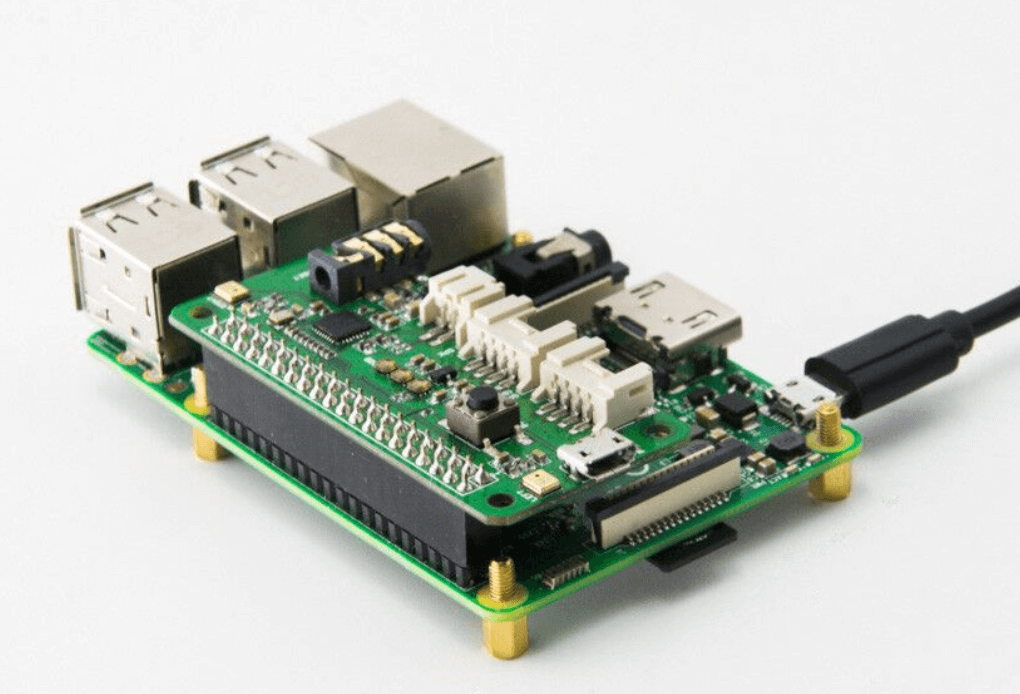
ReSpeaker 2-Mics Pi HAT is a dual-microphone expansion board for Raspberry Pi designed for AI and voice applications. You can build more powerful and flexible voice products that can integrate with Amazon Alexa Voice Service, Google Assistant, and many others.
Other than this cost effective 2 Mics HAT, we also offer other Respeaker HATs with 4 Mics and 6 Mics based on your needs.
Raspberry Pi Relay Board v1.0

Want to control high voltage devices like your fans, lights, heaters or other household appliances with the Raspberry Pi?
With this Relay HAT, you can do that and build smart home projects! The Relay Shield utilizes four high-quality relays and provides NO/NC interfaces that control the load of high current. It also has four dynamic indicators show the on/off state of each relay.
Those were just some of our best selling Raspberry Pi HATs! Interested in more Raspberry Pi HATs? Check out all of the HATs we offer here!
Getting Started with the Raspberry Pi
Now that you’ve known what is the Raspberry Pi, what you can do with it, what is on the board of the Raspberry Pi, and which software to use, you are ready to get started into the world of electronics and Raspberry Pi!
To get started with Raspberry Pi 4:
Raspberry Pi 4B – Starter Kit – 4GB

- To help you avoid all the hassle in getting all the individual components and to get started, we have helped you select the best starter kit regarding Raspberry pi 4 to assist you in your amazing Raspberry pi journey.
- Let us see what we need for a starter, firstly we need to charge the raspberry pi 4 so we have a power supply in the box for you, it is 5V3A type C wall adapter, perfectly compatible with Pi 4. A micro SD card with a card reader is necessary to get your pi running and a case with heat sink is critical to make your pi look tidy and cool it down.
- With this Raspberry Pi starter kit, you’ll get all of this in the box. Besides, there is also a micro HDMI to standard HDMI male cable to connect your pi with screen.
- It looks like you have get all the things you need to turn it into a computer. What if you only have a laptop on hand rather than a screen? Now you need an Ethernet cable to connect pi 4 with your laptop so you can get access to SSH to control your pi. This starter kit is a very thoughtful kit for starters to begin exploring the Pi world.
To get started with Raspberry Pi Zero:
Raspberry Pi Zero W Complete Starter Kit

- With this kit, it has everything you need to get your Raspberry Pi Zero W up and running. The micro TF card is also pre-installed with NOOBS (Raspbian OS) which saves you trouble.
- It comes with:
- Raspberry Pi Zero W
- Mini HDMI OTG Cable
- Micro USB OTG Cable
- 2×20 Pin male header and female header
- Official Raspberry Pi camera strip
- Pi Zero Case
- 8GB Micro TF card (Pre-installed with NOOBS)
- 5V 1.5 Power Adapter (US Standard)
Helpful Resources & Tutorials
To help you on your journey into the world of Raspberry Pi, here are some helpful resources that you can look at to get started and learn more about the Raspberry Pi!
Tutorials and Guides
- Which Raspberry PI Operating Systems (OS) to use? – Learn about the various OS (Raspbian, OSMC, OpenELEC, Windows IoT Core, RISC operating system) you can use with the Pi.
- Best Accessories Guide for Raspberry Pi 4 – List of accessories that you are recommended to get with your Pi 4
- Cooling solutions: Raspberry Pi 4 Heat sinks vs Cooling Fans: Which one to use? – Under normal working load, the temperature of the board can reach up to 60 °C or even 70 °C after using the USB port. If you do some CPU-intensive work, the chip will soon reduce performance for protection purposes.That’s why you do need a heatsink or any cooling fan for the Raspberry Pi 4. Which one to get? Check out this guide to find out!
- What is Power over Ethernet (PoE) and How to use PoE HAT with the Raspberry Pi – Find out how to power your Raspberry Pi while providing it data connection with just 1 wire with Power Over Ethernet (PoE).
- LoRa and LoRaWAN for Arduino and Raspberry Pi – Learn how to send data back-and-forth over a long-range at a low cost with LoRa.
- TOP 20 Popular Raspberry Pi Displays & Screens – With so many displays available for your Raspberry Pi , you might need some help to choose one!
- How to use: Mini USB Microphone on Raspberry Pi 4 – Want to make your Raspberry Pi be able to record audio? Check out this guide.
- Installing ROS Melodic on Raspberry Pi 4 and RPLIDAR A1M8 – Since Debian Buster was released recently, there are no pre-built ROS packages to install with apt-get, which is a preferred method of installation. Through this guide, you will learn how to install ROS Melodic from the source.
- All You Need to Know About the Raspberry Pi RP2040 – Guides, Projects, Accessories & More! – A deep dive into the latest microcontroller from Raspberry Pi
Projects
- Top 40 Raspberry Pi Projects You Must Try – Our biggest and baddest list of Raspberry Pi projects, updated frequently with even more ideas!
- 10 Most Basic but Interesting Applications of Raspberry Pi – Given the multitude of possibilities with the Pi, you might be unaware of some interesting functions that the Rasberry Pi is capable of. Why not check out this guide on the 10 most basic but interesting applications of Raspberry Pi to find out more!
- How to Build a Raspberry Pi NAS Server? – Learn how to build a NAS server to store your files in the cloud!
Helpful Links
- Udemy Raspberry Pi – Online learning platform with Raspberry Pi learning courses to learn more about electronics and Raspberry Pi
- Seeed on Hackster – Find awesome Raspberry Pi Projects with instructions by Seeed and make them yourself!
- Hackster.io and Instructables – Find other awesome projects from the community and try it out for yourself!
- Raspberry Pi Forum – Raspberry Pi Official forum for discussing anything related to the Raspberry Pi. Perfect place to go for troubleshooting.